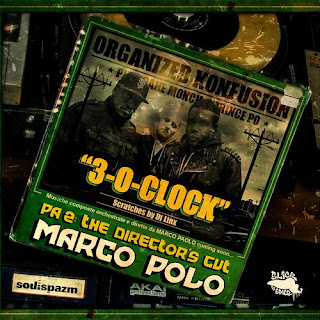I have regular segment called Fresh Produce on the MusicVox
on Vocalo Public Radio in Chicago every Tuesday. I highlight three to five new
albums that are out that week. As such, I listen to at least five and usually
closer to ten new releases each week, most of which I never listen to a second
time. Even with all of this time I spend keeping up with the torrent of new
releases, I still find time to listen to great older albums. To honor some of
these older albums that dominated my year, I put together this list of my top
non-2013 albums of the year in no particular order. Some are albums I’ve been listening to for years,
and others are ones I discovered for the first time in the last twelve months.
All of them are excellent.
#1: Mr. Lif - I Phantom (2002)
Mr. Lif was one of my first favorite rappers. Mo’ Mega and the Emergency Rations EP were so important to me in high school, and
Mr. Lif was more instrumental than almost any other rapper in getting me to
really plunge into the world of hip-hop, but I didn’t hear I Phantom until a couple of years into college. Spurred on by
El-P’s phenomenal work last year, 2013 has found me listening to a ton of Def
Jux stuff again, and I Phantom has
gotten the most plays from me this year out of that crop of exceptional albums.
It’s a great album that follows a loose multi-part concept, and Mr. Lif proves
that he is a remarkably talented rapper, especially on tracks like the second
half of “Return of the B-Boy.” More than anything, revisiting I Phantom reminded me why I got into
hip-hop in the first place. And “Live from the Plantation” helped me get
through a lot of drives to a shitty job.



































